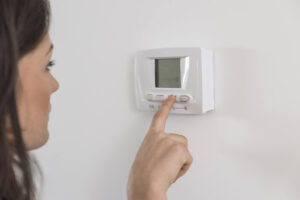Home should feel like the safest place on earth. Yet, sometimes, there are hidden dangers lurking in the very walls we trust to protect us. One of the most overlooked hazards is electric shock, and it’s not something you want to take lightly.
In this blog, we’ll go over ten common causes of electric shocks at home to help you recognize and address potential hazards. By familiarizing yourself with what causes an electric shock and learning how to prevent it, you can keep your family safe.
What Causes an Electric Shock?
An electric shock occurs when a person comes into contact with an electrical source, causing the current to pass through the body. The severity of the shock depends on factors like the voltage involved, the pathway the current passes through, and the length of time in contact with the electricity.
Even low-voltage shocks can lead to internal injuries such as damaged muscles, abnormal heart rhythms, and even cardiac arrest. High-voltage shocks, meanwhile, may result in severe burns, broken bones, or worse, especially if contact is made with a live power source. Whether it’s a mild electric shock that causes a tingling sensation or something more serious, knowing the causes of electrocution is the first step in prevention.
Common Causes of Electric Shocks
Electric shocks are serious business, and the best way to protect your family is by staying informed and proactive. Now that we’ve covered the basics, let’s look at the potential causes of electrocution that could be lurking in your home.
1. Faulty Wiring and Old Electrical Systems
One of the most common causes of electric shocks at home is outdated or faulty wiring. Old wiring is more prone to wear and tear, leading to exposed wires, loose connections, and frayed cords. These issues increase the risk of contact with live electricity, which can result in an electric shock or even a fire. It’s a good idea to schedule regular inspections to make sure your electrical systems are up to date.
Older homes, in particular, may have wiring that doesn’t meet modern safety standards. In some cases, two-prong outlets are still in use, but they lack the grounding necessary to prevent electrical accidents. Replacing outdated wiring and upgrading to GFCI and AFCI protection is essential for avoiding electrical shock.
2. Damaged or Frayed Electrical Cords
Using appliances or devices with frayed electrical cords can be what causes an electric shock. Damaged cords expose the wiring inside, making it easy for someone to touch live wires accidentally. Whether it’s an old extension cord or a beloved kitchen appliance, it’s important to regularly inspect your cords and replace any that show signs of wear.
3. Water and Electricity Don’t Mix
Wet areas are a hot spot for electric shock injuries. Water is a great conductor of electricity, which means it can carry electrical current more easily than dry surfaces. Bathrooms, kitchens, and outdoor spaces are all prime locations where electric shock occurs due to water exposure.
Dropping an electrical appliance like a hair dryer into the sink or using a power tool in a damp environment can cause serious injuries. Installing GFCI outlets in these locations is key to avoiding accidents, as these outlets are designed to shut off power in dangerous situations.
4. Faulty Appliances
Another leading electrical shock cause is faulty or broken appliances. Whether it’s a malfunctioning toaster or a washing machine with exposed wires, faulty appliances can easily become a source of electricity. If you notice that a particular appliance gives you a tingling sensation or emits a burning smell, it’s time to stop using it and call a professional to inspect it. Faulty appliances should either be repaired or replaced to avoid accidents.
5. Inadequate Circuit Protection
Your home’s electrical system is equipped with circuit breakers that help protect against overloads and short circuits. However, if your breakers are outdated, damaged, or not functioning correctly, they can fail to shut off the power in dangerous situations. This increases the risk of shocks and fires. Regularly testing your main breaker and individual breakers can help prevent electrical accidents.
6. Misuse of Electrical Outlets
Overloading electrical outlets or using the wrong type of outlet for high-powered appliances are also common causes of electric shocks at home. For instance, plugging too many devices into one outlet can overwhelm the circuit, leading to sparks, shocks, or worse. Additionally, if your home lacks safety switches or GFCI protection, using outlets near water sources increases the likelihood of a dangerous electrical accident.
7. Poorly Maintained Electrical Appliances
Just like anything else in your home, electrical appliances need maintenance. Dust, moisture, and time can all lead to issues that cause shocks. Keeping appliances clean and properly stored can help prevent accidents. If an appliance starts malfunctioning, has a frayed electrical cord, or sparks when plugged in, it should be serviced or replaced immediately.
8. Contact With Power Lines
While this is less common inside the home, power lines pose a significant electrocution hazard, particularly during storms or accidents. If a downed power line is in your yard, do not attempt to move it. Always contact your power company. Similarly, take care when using metal ladders near power lines outside to avoid accidental contact.
9. Handling Electrical Devices With Wet Hands
Have you ever touched an electrical device with wet hands and felt a little jolt? This happens because water increases the conductivity of your skin, making it easier for electricity to pass through. Handling electrical cords or appliances with wet hands, especially in bathrooms and kitchens, is a leading cause of electric shock injuries.
10. DIY Electrical Work
While DIY projects are great for saving money and feeling accomplished, messing with your home’s electrical system is a bad idea unless you’re a trained electrician. Attempting to fix faulty wiring or install new outlets without the proper knowledge increases the likelihood of mistakes, which can lead to an electrical shock hazard. Electrical accidents caused by improper repairs are one of the leading causes of electrocution in homes.
What to Do After an Electric Shock
If you or someone in your household has experienced electrical injuries, it’s important to take action immediately. Depending on the severity of the shock, seek medical attention right away, even if there are no visible injuries. Sometimes, internal injuries like tissue damage or ventricular fibrillation can occur without external signs.
For minor shocks, it’s still a good idea to check for electric shock symptoms like numbness, tingling, or erratic pulse. If any of these symptoms are present, contact a healthcare provider or visit the emergency department for further evaluation.
How to Prevent Electric Shocks in Your Home
If you’re looking for ways to avoid these common electrical shock causes, consider these electrical safety tips:
- Regularly inspect your electrical cords and appliances for wear and tear.
- Install GFCI and AFCI protection in wet areas and for heavy-duty appliances.
- Don’t overload outlets, and be cautious when using extension cords.
- Always turn off the power before working on any electrical projects.
- Hire professionals for electrical repairs and installations.
Contact Our Electricians in Houston!
If you’ve encountered any of the common causes of electric shocks at home, don’t wait until something goes wrong. Universal Home Experts is here to help with all your electrical needs. Our certified electricians are here to help keep your home safe with our services, including GFCI and AFCI protection in Houston, TX.
By understanding what causes an electric shock, you can take steps to avoid this danger and protect your family from unnecessary harm. Stay safe, and don’t hesitate to call our Houston electricians when you need help. Contact us today to schedule your appointment!



